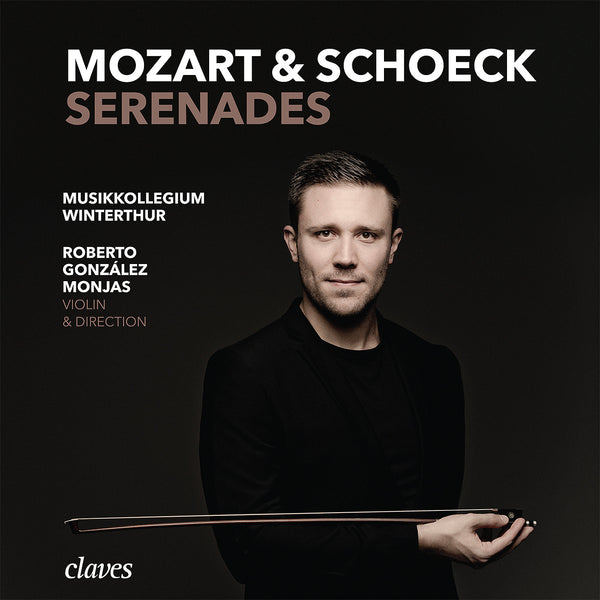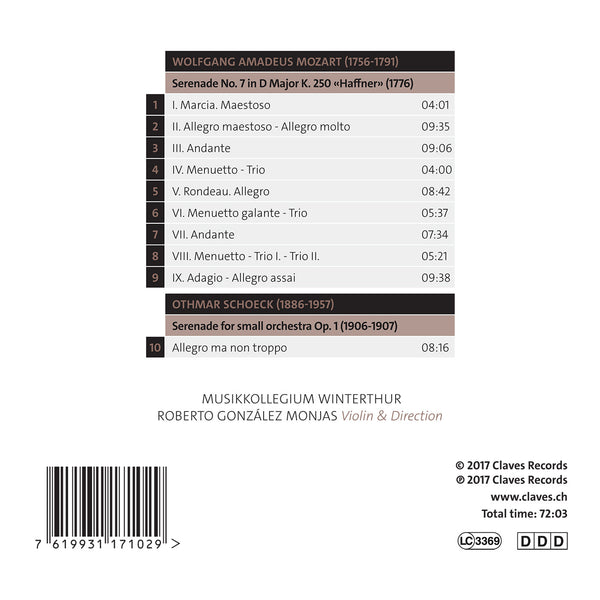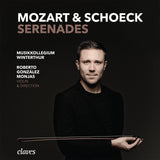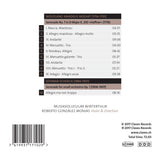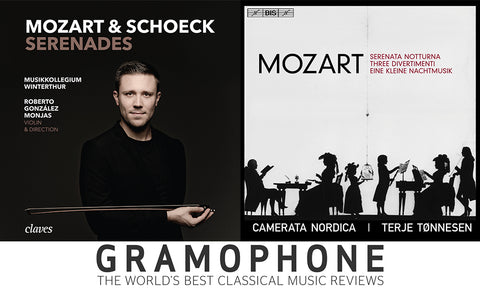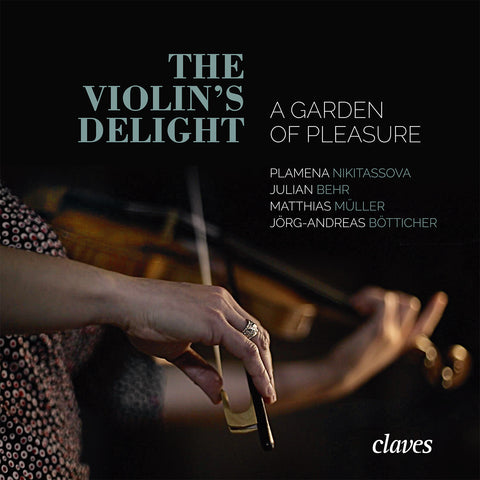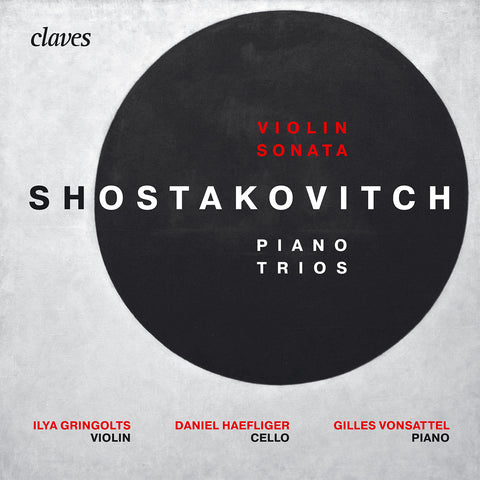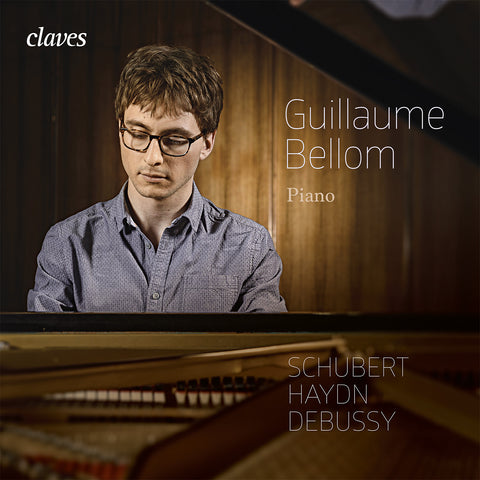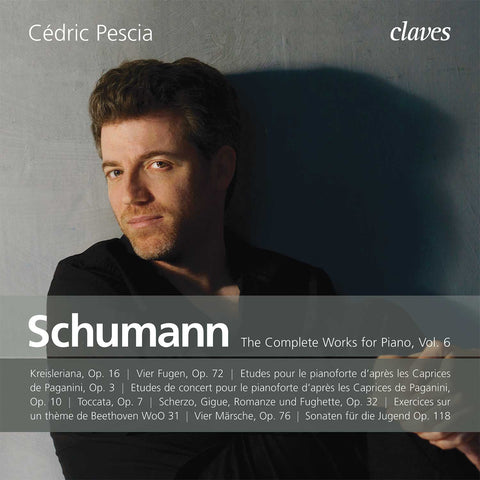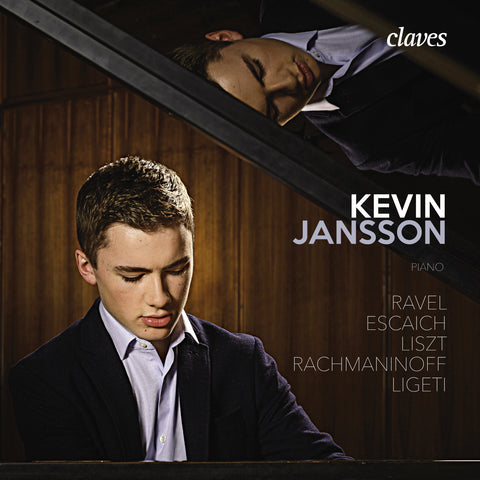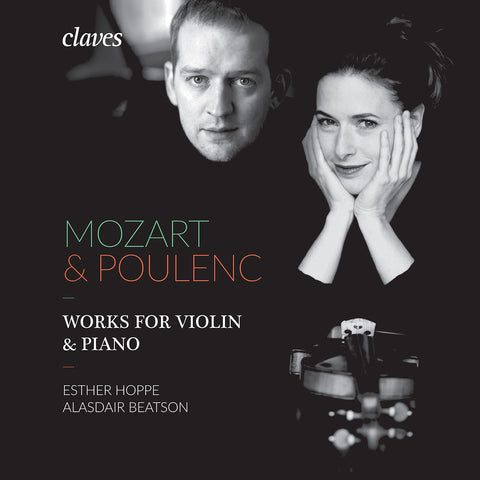(2017) Mozart & Schoeck - Serenades - Roberto González Monjas, Violin & Direction
Catégorie(s): Orchestral Répertoire
Instrument(s): Violon
Compositeur principal: Wolfgang Amadeus Mozart
Orchestre: Musikkollegium Winterthur
Chef: Roberto González Monjas
Nb CD(s): 1
N° de catalogue:
CD 1710
Sortie: 20.10.2017
EAN/UPC: 7619931171029
- UPC: 191773072902
Cet album est en repressage. Précommandez-le dès maintenant à un prix spécial.
CHF 18.50
Cet album n'est plus disponible en CD.
Cet album n'est pas encore sorti. Précommandez-le dès maintenant.
CHF 18.50
Cet album n'est plus disponible en CD.
CHF 18.50
TVA incluse pour la Suisse et l'UE
Frais de port offerts
Cet album n'est plus disponible en CD.
TVA incluse pour la Suisse et l'UE
Frais de port offerts
Cet album est en repressage. Précommandez-le dès maintenant à un prix spécial.
CHF 18.50
Cet album n'est plus disponible en CD.
This album has not been released yet.
Pre-order it at a special price now.
CHF 18.50
Cet album n'est plus disponible en CD.
CHF 18.50
Cet album n'est plus disponible en CD.
MOZART & SCHOECK - SERENADES - ROBERTO GONZÁLEZ MONJAS, VIOLIN & DIRECTION
About this album
They were both just twenty years young and always good for a musical laugh when they composed the serenades we have recorded on this CD. One of them, Wolfgang Amadeus Mozart, wrote his “Haffner Serenade” KV 250 for Sigmund Haffner d. J., who had commissioned him with a “Braut Musick” for his sister Marie Elisabeth's wedding with Franz Xaver Anton Späth from Salzburg. The other one, Othmar Schoeck, 130 years later humorously reverberated this genre, which had peaked in Mozart’s works composed from 1769 until 1779.
The genre of the serenade originates in the 16th century. Its purpose was to perform music outdoors at night so as to honor a beloved one or to show respect to a high-ranking person. In Salzburg, it developed into a separate tradition known as “Finalmusik”, with which the students of the University of Salzburg thanked their sovereign at the end of the academic year. At first, the musicians played the work commissioned for this occasion in the courtyard of the summer residence of the Prince-Archbishop. Afterwards, while marching through town, they performed a march also specially composed for the occasion, which had to be played by heart. Finally, a second performance was given for the University professors in front of the “Kollegiengebäude”, the main building of the University. As we know from Nannerl Mozart's diary, such prestigious event lasted for approximately two and a half hours, thus requiring more than merely a simple serenade.
Therefore, besides the serenade, genres such as the notturno, kassation and divertimento were embedded in the “Finalmusik”. Among Salzburg composers regularly commissioned with “Finalmusiken” were Michael Haydn, Joseph Hafeneder and Mozart's father Leopold; he supposedly wrote over 30 serenades.
Roberto González-Monjas
Praised for his versatility and engagement in a broad span of projects and musical areas, Roberto González Monjas has quickly become a sought-after musician with an exciting career. He is the concertmaster of the Orchestra dell’Accademia Nazionale di Santa Cecilia in Rome and the Musikkollegium Winterthur, as well as a violin professor at the Guildhall School of Music & Drama in London and Artistic Director of Iberacademy, the Iberamerican Philharmonic Academy.
His busy schedule includes regular activity conducting and directing orchestras such as Orchestre de l’Opera National de Bordeaux Aquitaine, Verbier Festival Chamber Orchestra, Orquesta Sinfónica de Castilla y León, New World Symphony in Miami and Medellín Philharmonic Orchestra. He is fortunate to make music with extraordinary artists such as Ian Bostridge, Yuja Wang, Ana Chumachenco, Thomas Quasthoff, Alexander Lonquich, Andreas Ottensamer, Daniil Trifonov, András Schiff, Fazil Say, Barnabás Kelemen, Katalin Kokas and Kit Armstrong.
Roberto is a regular guest at the Verbier Festival, collaborates with the Mozarteum Stiftung in Salzburg, Philharmonia Orchestra, Berlin Radio Symphony Orchestra, Berliner Barocksolisten, Camerata Salzburg, Les Musiciens du Louvre, and he is the Artist in Residence of the Castilla y León Symphony Orchestra in Valladolid, his hometown in Spain.
He has been deeply influenced by musical contact with Serguei Fatkulin, Igor Ozim, David Takeno, Reinhard Goebel, Ana Chumachenco, Leonidas Kavakos, Christian Tetzlaff, Gabor Takacs-Nagy, Charles Dutoit, Rainer Schmidt, András Schiff and Ferenc Rados.
He plays a violin built by Giuseppe Guarnieri ‘filius Andreae’ in 1710, thanks to the generosity of five Winterthur families and the Rychenberg Stiftung.
The Musikkollegium Winterthur
The Musikkollegium Winterthur was formed in 1629, making it one of Europe's oldest musical institutions. The orchestra now gives some seventy concerts per season, about forty of them in Winterthur. The ensemble increasingly takes part in major concert series abroad. CD recordings of works by Frank Martin, Franz Schubert, Josef Rheinberger (ECHO Klassik 2011), Felix Mendelssohn Bartholdy and Ralph Vaughan Williams (ECHO Klassik 2013) have drawn international attention to the Musikkollegium Winterthur. Thomas Zehetmair, the internationally renowned violinist and conductor, is the orchestra’s chief conductor from 2016/17 season on.
In the first half of the 20th century composers such as Igor Stravinsky, Richard Strauss, Anton Webern, Paul Hindemith, Othmar Schoeck and Arthur Honegger composed for the Musikkollegium Winterthur through their patron Werner Reinhart; their music is still vividly present in today’s concert program.
The Musikkollegium Winterthur has proven strong and pioneering in its commitment for young people, the various formats for children brings nearly 10’000 children into the concerts and rehearsals annually. Further, new and experimental concert formats are an important factor of the orchestra’s curriculum; next to organizing and performing in the annual Classic Openair in a beautiful local park, formats such as classic in the club, classic circus, film & music have been promoted.
In addition to presenting a varied series of events, the Musikkollegium Winterthur has featured in books and CD and DVD projects as well as in a documentary film. Famous soloists and conductors like Martin Helmchen, Heinz Holliger, Sir András Schiff, Michael Sanderling, Christian Tetzlaff and Reinhard Goebel value their constant collaboration with the orchestra. In recent years, the Musikkollegium Winterthur has led the way with its pioneering work with young people. The targeted and lasting promotion of talented young artists like Kit Armstrong and Teo Gheorghiu is of special concern.
(2017) Mozart & Schoeck - Serenades - Roberto González Monjas, Violin & Direction - CD 1710
About this album
They were both just twenty years young and always good for a musical laugh when they composed the serenades we have recorded on this CD. One of them, Wolfgang Amadeus Mozart, wrote his “Haffner Serenade” KV 250 for Sigmund Haffner d. J., who had commissioned him with a “Braut Musick” for his sister Marie Elisabeth's wedding with Franz Xaver Anton Späth from Salzburg. The other one, Othmar Schoeck, 130 years later humorously reverberated this genre, which had peaked in Mozart’s works composed from 1769 until 1779.
The genre of the serenade originates in the 16th century. Its purpose was to perform music outdoors at night so as to honor a beloved one or to show respect to a high-ranking person. In Salzburg, it developed into a separate tradition known as “Finalmusik”, with which the students of the University of Salzburg thanked their sovereign at the end of the academic year. At first, the musicians played the work commissioned for this occasion in the courtyard of the summer residence of the Prince-Archbishop. Afterwards, while marching through town, they performed a march also specially composed for the occasion, which had to be played by heart. Finally, a second performance was given for the University professors in front of the “Kollegiengebäude”, the main building of the University. As we know from Nannerl Mozart's diary, such prestigious event lasted for approximately two and a half hours, thus requiring more than merely a simple serenade.
Therefore, besides the serenade, genres such as the notturno, kassation and divertimento were embedded in the “Finalmusik”. Among Salzburg composers regularly commissioned with “Finalmusiken” were Michael Haydn, Joseph Hafeneder and Mozart's father Leopold; he supposedly wrote over 30 serenades.
Roberto González-Monjas
Praised for his versatility and engagement in a broad span of projects and musical areas, Roberto González Monjas has quickly become a sought-after musician with an exciting career. He is the concertmaster of the Orchestra dell’Accademia Nazionale di Santa Cecilia in Rome and the Musikkollegium Winterthur, as well as a violin professor at the Guildhall School of Music & Drama in London and Artistic Director of Iberacademy, the Iberamerican Philharmonic Academy.
His busy schedule includes regular activity conducting and directing orchestras such as Orchestre de l’Opera National de Bordeaux Aquitaine, Verbier Festival Chamber Orchestra, Orquesta Sinfónica de Castilla y León, New World Symphony in Miami and Medellín Philharmonic Orchestra. He is fortunate to make music with extraordinary artists such as Ian Bostridge, Yuja Wang, Ana Chumachenco, Thomas Quasthoff, Alexander Lonquich, Andreas Ottensamer, Daniil Trifonov, András Schiff, Fazil Say, Barnabás Kelemen, Katalin Kokas and Kit Armstrong.
Roberto is a regular guest at the Verbier Festival, collaborates with the Mozarteum Stiftung in Salzburg, Philharmonia Orchestra, Berlin Radio Symphony Orchestra, Berliner Barocksolisten, Camerata Salzburg, Les Musiciens du Louvre, and he is the Artist in Residence of the Castilla y León Symphony Orchestra in Valladolid, his hometown in Spain.
He has been deeply influenced by musical contact with Serguei Fatkulin, Igor Ozim, David Takeno, Reinhard Goebel, Ana Chumachenco, Leonidas Kavakos, Christian Tetzlaff, Gabor Takacs-Nagy, Charles Dutoit, Rainer Schmidt, András Schiff and Ferenc Rados.
He plays a violin built by Giuseppe Guarnieri ‘filius Andreae’ in 1710, thanks to the generosity of five Winterthur families and the Rychenberg Stiftung.
The Musikkollegium Winterthur
The Musikkollegium Winterthur was formed in 1629, making it one of Europe's oldest musical institutions. The orchestra now gives some seventy concerts per season, about forty of them in Winterthur. The ensemble increasingly takes part in major concert series abroad. CD recordings of works by Frank Martin, Franz Schubert, Josef Rheinberger (ECHO Klassik 2011), Felix Mendelssohn Bartholdy and Ralph Vaughan Williams (ECHO Klassik 2013) have drawn international attention to the Musikkollegium Winterthur. Thomas Zehetmair, the internationally renowned violinist and conductor, is the orchestra’s chief conductor from 2016/17 season on.
In the first half of the 20th century composers such as Igor Stravinsky, Richard Strauss, Anton Webern, Paul Hindemith, Othmar Schoeck and Arthur Honegger composed for the Musikkollegium Winterthur through their patron Werner Reinhart; their music is still vividly present in today’s concert program.
The Musikkollegium Winterthur has proven strong and pioneering in its commitment for young people, the various formats for children brings nearly 10’000 children into the concerts and rehearsals annually. Further, new and experimental concert formats are an important factor of the orchestra’s curriculum; next to organizing and performing in the annual Classic Openair in a beautiful local park, formats such as classic in the club, classic circus, film & music have been promoted.
In addition to presenting a varied series of events, the Musikkollegium Winterthur has featured in books and CD and DVD projects as well as in a documentary film. Famous soloists and conductors like Martin Helmchen, Heinz Holliger, Sir András Schiff, Michael Sanderling, Christian Tetzlaff and Reinhard Goebel value their constant collaboration with the orchestra. In recent years, the Musikkollegium Winterthur has led the way with its pioneering work with young people. The targeted and lasting promotion of talented young artists like Kit Armstrong and Teo Gheorghiu is of special concern.
Return to the album | Read the booklet | Composer(s): Wolfgang Amadeus Mozart | Main Artist: Roberto González Monjas














